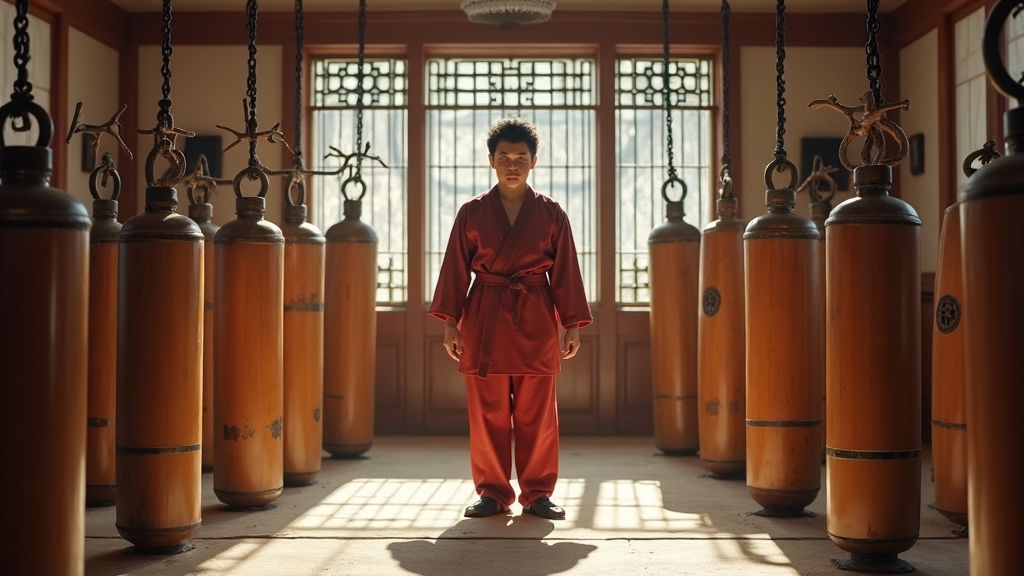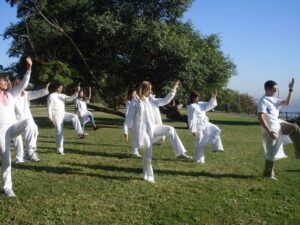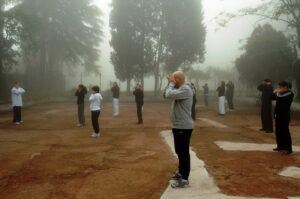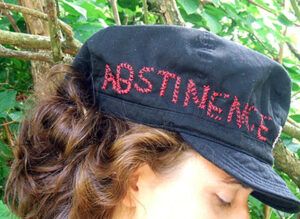Beginner’s Kung Fu strength training is a really practical way to build a solid foundation for martial arts. This strength doesn’t come from flashy moves you see in the movies. It’s all about functional power you can actually use for better balance, faster reflexes, and solid punches or stances. When you’re just starting out, picking the right drills and knowing how to put together a plan that fits your level can save you a ton of frustration down the road. Here’s how I put together simple, focused plans for Kung Fu beginners to help with progress and prevent injuries.

Why Strength Training Matters for Kung Fu Beginners
Strength has a huge role in Kung Fu, but it’s not all about lifting heavy weights at the gym. It’s about building a steady, adaptable base so you can generate powerful movements but still keep control. Kung Fu puts a lot of emphasis on agility, strong legs, stable stances, and explosive actions, so your training should match those needs.
When you add strength training early on, you end up improving your coordination, injury resistance, and even your mental focus. Over time, you’ll notice that your stances feel stronger, your punches and kicks are sharper, and you feel more confident during sparring. The trick is to keep things practical and adaptable. Kung Fu students with a solid strength base also tend to perform basic forms and patterns with greater control, which translates directly to better athletic performance within the art.
Core Strength Principles in Kung Fu
Most traditional Kung Fu schools focus on quality movement, balance, and body alignment. I’ve found that beginners often struggle with sore legs or lower back pain just from holding horse stances or practicing basic footwork. That’s why Kung Fu strength training should cover:
- Joint integrity: Movements that support knee, hip, and shoulder health.
- Core control: Stabilizing muscles so you can snap or hold positions with less effort.
- Explosive power: Short bursts for striking or jumping.
- Endurance: Muscle stamina for long forms or drills.
I try to mix a little bit of all these in any plan for someone new to martial arts. Focusing on all these areas together leads to faster improvements and sets you up for more eye-catching skills as you advance. For those interested in practical Kung Fu, these principles will become the backbone of strong, stable movement and real-world effectiveness.
Where to Start: Building Your Kung Fu Strength Plan
Your first routine can be really basic but super effective. For a solid beginner plan, I keep it at three workouts per week. Here’s a simple example layout you can use:
- Day 1: Lower body and stances
- Day 2: Upper body and striking strength
- Day 3: Total body and core
Each workout should include a warm-up, some focused strength movements, a little balance or mobility work, and a cooldown with stretching.
Keeping it simple is key for new students. Trying to game plan too many exercises or super complicated routines usually just leads to frustration or missing the basics. Start with clear goals and build on them once you feel confident.
Sample Beginner Kung Fu Strength Exercises
Start slow, and focus on form before trying to do a ton of reps. Some tried and true moves I recommend for beginners include:
- Horse Stance Holds: Aim for 20 to 60 seconds at a time. This one’s a challenge, but it builds thigh and hip strength like nothing else.
- Pushups: Focus on slow lowering. Try to get full range of motion for both arms and wrists.
- Bodyweight Squats: These help develop both strength and flexibility. Go as low as comfortable.
- Reverse Lunges: Add balance into your leg routine. Great for knee stability.
- Plank Holds: Build the core strength that’s so useful for every movement.
- Wall Sits: Hold your back against the wall and sink into a sitting position. Add some isometric strength for legs.
Over a few weeks, you’ll notice stances feel less shaky and your muscles handle longer training sessions without getting super tired. Slowly turning up the effort in these moves pays off with steady progress and keeps motivation high. As your confidence grows, you can also check out new stances like the cat or bow stance to further boost your capabilities.
Simple Weekly Kung Fu Strength Plan for Beginners
To make things even clearer, here’s how a week might look. This is a basic structure you can use right away. Remember to adjust rest periods and rep numbers as you get stronger:
Monday (Lower Body and Stances)
- Warm up: light jog or jump rope, 5 minutes
- Horse stance holds: 3 x 30 seconds
- Bodyweight squats: 3 x 15 reps
- Reverse lunges: 3 x 10 reps each leg
- Wall sit: 2 x 30 seconds
- Mobility: hip circles and ankle mobility, 2 minutes
Wednesday (Upper Body and Striking)
- Warm up: arm circles, stretch, 3 minutes
- Pushups: 3 x 10 reps
- Incline pushups (on bench or table): 2 x 12 reps
- Arm plank: 2 x 30 seconds
- Shadow boxing: focus on speed and control, 2 minutes
- Shoulder mobility: gentle dynamic stretches, 2 minutes
Friday (Total Body and Core)
- Warm up: light skipping, 3 minutes
- Bodyweight squats: 2 x 12 reps
- Pushups: 2 x 8 reps
- Plank: 2 x 35 seconds
- Superman holds: 2 x 20 seconds (lying face down, arms and legs raised)
- Cool down: stretch, especially hamstrings, hips and shoulders
Rest days can include a little stretching or casual walking, but your muscles definitely need some recovery time. Giving your body enough time to bounce back is just as valuable as doing the exercises themselves. Taking care of recovery helps your mind stay fresh, too, which is important for learning new skills.
Things Beginners Should Watch Out For
Early on, it’s really important to pay attention to how your body feels. I’ve seen beginners rush into things and end up sidelined by knee or back problems. Here are some things to be mindful of:
- Form Over Speed: Take your time to learn the movement. Practicing with sloppy form is a fast track to injury.
- Don’t Skip Mobility: Strong muscles need flexible joints. Regular stretching keeps you moving smoothly for kicks and stances.
- Rest and Recovery: Soreness is normal, pain is not. Listen to your body and rest if something doesn’t feel right.
- Stay Consistent: Three times a week is plenty when you’re starting out. Try not to skip too many sessions so your progress won’t stall.
Form Over Speed
No need to do everything fast. Most traditional teachers would rather see a strong horse stance held perfectly for 20 seconds than a quick, sloppy one for a full minute. Good habits matter more than showing off reps. Quality always beats quantity in the early stages. This focuses your training on skills that last, not just fast results.
Don’t Skip Mobility
Mobility goes hand in hand with strength. For Kung Fu, you need hips and ankles that can move freely, especially for low stances and kicks. A little stretching daily, especially right after training, helps a lot. If you struggle to go low in stances, working on your hip flexibility could be a game changer. Even a short routine of dynamic stretches a few times a week makes a difference.
Rest and Recovery
Muscles grow and recover when you rest, not while you’re working out. I usually tell new students to skip a session or swap it for light stretching if they’re feeling unusually stiff or tired. Getting extra sleep or even focusing on a meditation session can make your next workout more productive. Remember, mental fatigue can weigh on your physical performance as well.
Stay Consistent
The first few weeks might feel tough, but as your strength builds, these routines won’t feel like such a chore anymore. That’s when you’ll really notice the upgrades in your regular Kung Fu classes or when following along with YouTube tutorials at home. The real gains come from sticking with the routine long enough for your body to adjust and ramp up abilities over time.
Kung Fu Strength Training Gear for Beginners
Most beginners actually don’t need much gear. Training with just your bodyweight does the job. But if you want to take things up a notch, you can experiment with some classic tools:
- Resistance Bands: Affordable and handy for adding challenge without stressing the joints.
- Light Dumbbells or Kettlebells: Only needed if you want extra upper body work. Start really light to protect your joints.
- Grip Strengthener: Helps for those with weak wrists or grip issues, especially after lots of punching practice.
Traditional hand weights, wooden dummies, or even simple sandbags are also used in many old-school Kung Fu routines. For now, though, sticking with basic bodyweight routines keeps things simple and effective. As you get more advanced, you might start to bring in simple equipment, but beginners make the best progress by focusing on the basics first. If you’re curious about traditional tools, take a class or ask your instructor to try them safely.
Common Questions from New Kung Fu Strength Trainees
Sometimes newbies have similar questions, especially when they get stuck. Here are a couple of the most common ones I’ve heard:
How sore will I get starting out?
Some soreness is expected after new exercises, especially in the legs and core. This should get better as your muscles adapt and recover. If you have sharp or nagging pain, that’s your cue to rest and double-check your technique. For most beginners, the first two weeks are the toughest. After that, your body gets used to the movements, and soreness fades.
Can I get strong without using weights?
You can build a lot of strength just with bodyweight. As you progress, you can always add simple equipment or challenge yourself with harder exercise variations. Consistency matters more than fancy gear. Focus on control and proper technique, and the results will follow. Martial arts legends throughout history have built incredible power using nothing but their own bodies and simple tools.
How long until I see results?
Most people notice stronger stances and better balance within four to six weeks of regular training. Visible muscle changes might take a bit longer, but the real improvements show up during class or when practicing forms. You might stumble upon small wins in flexibility or coordination even before big strength changes appear. Celebrate each gain—progress in martial arts is about the small victories adding up.
Keeping Progress Steady and Enjoyable
A lot of beginners worry about getting bored or not sticking with training. Here’s how I keep things fresh and fun:
- Switch up your routine every few weeks. Try new stances or increase your hold times or reps to keep your muscles guessing.
- Mix in some light forms practice or martial arts footwork with your strength sessions for variety and to keep things interesting.
- Set small goals, like holding horse stance for 45 seconds or adding more pushups than last week, to stay motivated by seeing steady progress.
Tracking progress in a notebook or even a phone app helps you stay on target and feel good about the gains you’re making. Join a beginner’s class in person or online to get involved in a community where you can ask questions or swap training tips. Remember, progress doesn’t have to be a solo ride!
Final Thoughts
Starting out with Kung Fu strength training is all about sticking to the basics and doing them well. Focus on form, mix up your workouts, and let your body have rest so you can keep getting stronger and stay injury-free. As you go, these routines become second nature, and you’ll see how they make your martial arts practice feel smoother and more powerful every single week. Stay patient and celebrate each bit of growth along the way—your Kung Fu adventure will pay off with time and effort.
Related Articles






